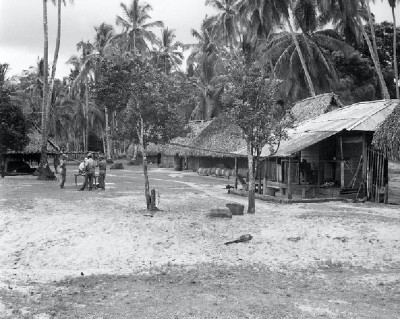COIBA: The Correctional Island Opens Its Cells to the World

By: Ivan Castillo Coiba is the largest of the group of islands and islets in the National Park bearing the same name. Coiba National Parks is one of the most visited in Panama.
With island and coastal ecosystems, a variety of flora and wildlife, with scenic and almost untouched nature, it is clear why national and international tourists flock here.
What makes Cobia different is its history.
There is the new chapter, a touristic center. And then it’s former role as a penitentiary and correctional center that is very well represented by more than 20 camps, a central base, and cells that transport us to that past.
This past contributed to the preservation of the area. Traveling around Coiba means admiring that history, being witness to its great transformation. You catch a glimpse into a future where people of the world coexist in harmony with the natural environment offered by beautiful beaches, reefs that are valuable beyond words, mysterious places, and seductive sunrises and sunset. This bohemian atmosphere allows you to imagine, to enjoy this marvelous adventure.
Located only about 60 km from the coast, Coiba is far enough away from the relative noise created by the other province’s towns, making us believe it is a different country. It’s physical geography and plant life is very different compared to its neighbors; this is due to the isolation from the rest of the country. Coiba is home to the last remaining untouched low land humid forests in the Pacific as well as beautiful mangroves and other type of vegetation offering shelter to several species that cannot be found on the mainland anymore.
Its origin dates back to 70 million years, during the Cretaceous period, the origin point or hotspot being the Galapagos. Those islands contain three different geological points; on the west are the oldest materials. On the north and east of the island, igneous materials aged about 50 million years, suggesting a new volcanic event. And lastly in the quaternary period, marine sedimentation contributed to the shape of the southern side.
Coiba’s main attractions are its beautiful beaches, and the authentic oasis of beauty you find on the whole island. Playa Hermosa is on the western side and known for its shape, similar to an inverted “C”, there is a wonderful view of the horizon. Playa Rancheria or Coibita also has a beautiful landscape boosted by several blue tones on its waters, making it an ideal place for kayaking or simply enjoying the delicate waters. Granito de oro is the main point, and a top pick among snorkeling enthusiasts. It’s small islet of white sand with a reef. This area is well known for colorful fish, white tip sharks, and hawksbill turtles.
Between July and October Contreras archipelago becomes a highly visited area. Constituted by Brincado, Uvas and Contreras islands, this archipelago is located on the northern sector of the park and is the ideal site for whale watching.
Some of the whales swimming in the waters around Coiba are listed on the IUCN (International Union for Conservation of Nature) list. Bowhead, Bryde (considered an endangered species) and Humpback whales are vulnerable species.
Highly migratory species such as whales, sharks and turtles visit Coiba annually. About 33 species of sharks and 19 of cetacean have been registered. Whales coming either from northern or southern cold seas visit the tropical waters seeking food and a place to mate and breed their offspring. It constitutes a place frozen in time that is not only the preferred place for nature lovers, but also a watching point for Humpback whales, the whale shark, scarlet macaw and many other species currently on the endangered list. Coiba is a frontier between those who are almost imperceptible that live permanently on the island, and those visiting it for a short period of time. This is what allows it its designation as a World Heritage site and a marine corridor for the tropical East Pacific. This highlights the relevance of the area as a safe haven for several species and ecosystems.
“For years Coiba Island was an enigma, for Panamanians, and for the rest of the world. The main reason was the prison; it kept many away from this island. Nowadays everything is different; in my opinion Coiba has turned into the main site for tourists seeking unexpected moments, unforgettable memories and a world of surprises. The challenge it imposes gives a reward in exchange: to contemplate marvelous landscapes and enjoying exciting experiences.”
